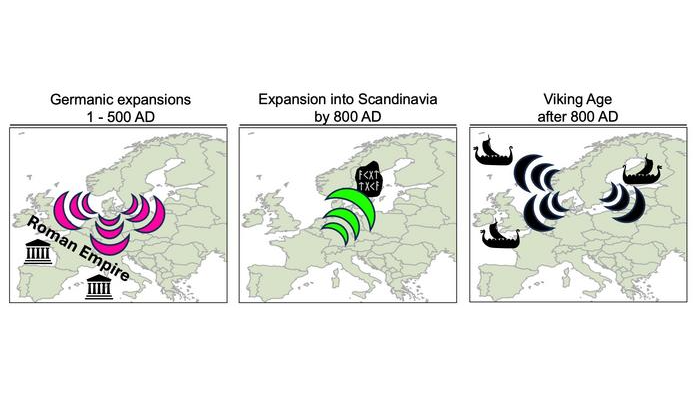1,500 ancient European genomes reveal previously hidden waves of migration, study finds
Scientists have identified three significant waves of migration in early Europe by studying human DNA. The study shows that Scandinavia was a key stopping point for early travelers who were moving northward and spreading out to other areas during the first thousand years.
Researchers outlined a new way to comprehend ancient DNA. They implemented the method - called "time-stratified ancestry analysis" using a statistical technique known as Twigstats - to over 1,500 previously published genomes. This approach enabled the team to discover patterns of migration and ancestry that other methods had masked.
(post-800).
The technique can identify unknown ancestry not just in entire groups of people, but also in specific individuals it was pointed out.
The research indicated that he shared as much genetic similarity with modern Dutch people as with Anglo-Saxons. The advanced method confirmed this by showing that he had about a quarter of his ancestry connected to Scandinavia.
"This confirms that people of Scandinavian descent were already present in Britain before the fifth century CE," the researchers stated in the study.
Related: Historians believe Attila the Hun launched an assault on Rome because of severe famine, not a thirst for bloodshed.

The "Twigstats" technique
The Twigstats method is innovative because it uses statistical analysis to study genetic mutations that appear on "branches" of a family tree over time. By taking into account the time frame of the mutations, it becomes possible to pinpoint an ancestor's heritage more accurately and with greater confidence than was previously possible.
The aim was to develop a data analysis method that would offer a more detailed view of fine-scale genetic history.
There is limited historical information available about them.
Using the data they gathered from their new method for studying ancient DNA, researchers believe that possibly, people in Northern Europe moved south into the Roman Empire during the early part of the first millennium due to its greater wealth, and later, new migrations started from Central to Northern Europe.
The head of a group at RIKEN, a major research institute in Japan, noted in a statement. "Our new method can now be used to help identify genetic patterns in people from different parts of the world, possibly solving some remaining genetic mysteries."

Post a Comment